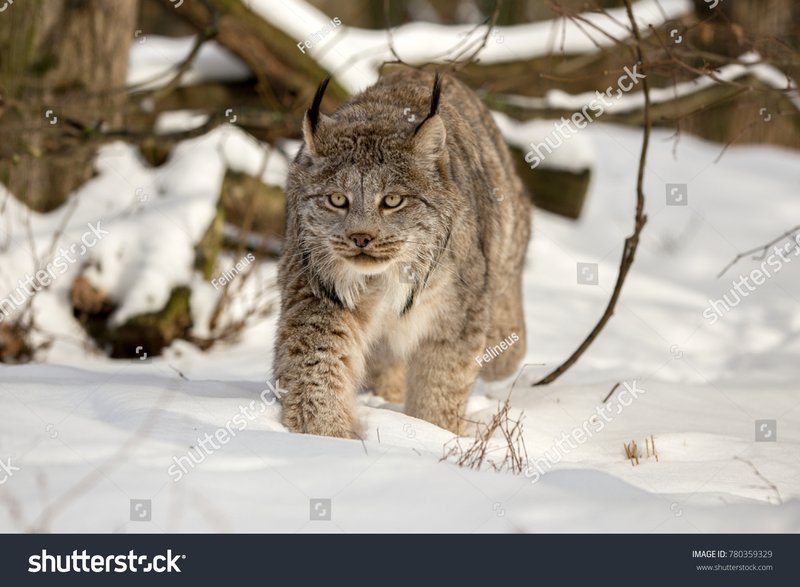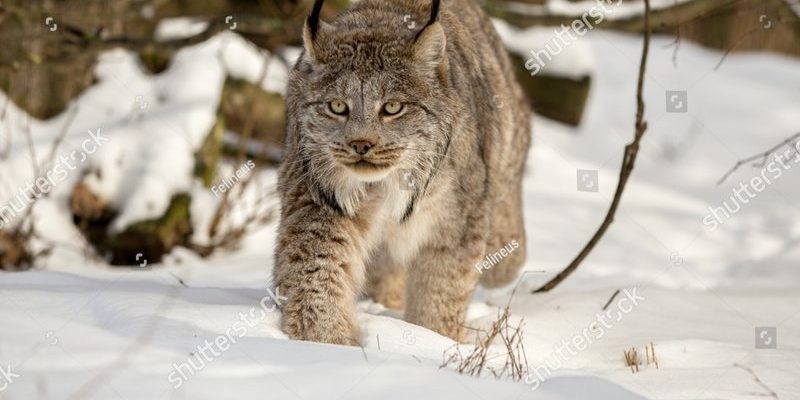
Understanding the evolutionary history of the Canada lynx is like peeling back the layers of an onion. Each layer reveals something new about its past, how it evolved, and how it fits into the ecosystem today. So, grab your favorite warm drink, and let’s dive into the rich tapestry of the lynx’s history—from its ancestors to its current habitat.
Ancestors of the Canada Lynx
To grasp the Canada lynx’s evolutionary journey, it’s important to start with its ancestors. The Canada lynx (Lynx canadensis) belongs to the Felidae family, which means it shares its lineage with other wild cats like lions, tigers, and domestic cats. Lynx are believed to have diverged from their ancestors around 2.5 million years ago during the Pleistocene era, a time marked by fluctuating climates and landscapes.
Picture a world where glaciers dominated the landscape, and forests were sparse. The ancestors of the lynx adapted to these harsh conditions by developing long legs and large paws, which helped them move through deep snow and hunt prey efficiently. The lynx’s ability to adapt quickly became its greatest asset, allowing it to thrive in various environments. Over time, these adaptations led to physical traits that define the Canada lynx today.
Interestingly, the Canada lynx’s immediate ancestors include the larger Iberian lynx and the Eurasian lynx. Their genetic makeup shares similarities, but environmental factors shaped their evolutionary paths. It’s almost like siblings taking different routes in life, each one adapting to their unique surroundings while keeping some family traits.
Physical Adaptations for Survival
The Canada lynx is a master of survival, primarily due to its remarkable physical adaptations. One of its most notable features is its long legs and large paws, which act like snowshoes. This adaptation allows the lynx to traverse snowy terrains with ease, making it an effective hunter in its northern habitat.
The lynx’s thick fur is another crucial adaptation. It keeps the lynx warm during the chilly Canadian winters, allowing it to maintain a stable body temperature. The soft undercoat is especially fluffy, providing insulation against the cold. You might say it’s like having a built-in winter coat that stays perfectly tailored year after year.
Moreover, the Canada lynx has sharp, retractable claws that help it grip the snowy ground while stalking prey. Its keen vision and hearing make it an excellent hunter, especially in low-light conditions. Imagine being able to spot a snowshoe hare, its primary food source, hidden among the snow—that’s the kind of prowess this feline exhibits. Honestly, every part of its physical form tells a story of survival and adaptation.
The Canada Lynx’s Habitat Over Time
As the climate changed over centuries, so did the Canada lynx’s habitat. Traditionally, these cats are found in the boreal forests of Canada and parts of Alaska, where they thrive in snowy conditions. But their habitat wasn’t always that way. During the last Ice Age, for instance, the Canada lynx roamed broader areas, moving south with colder climates.
In the present day, the Canada lynx is especially fond of regions with dense forests, which offer ample cover and hunting grounds. These areas are also rich in vegetation, providing shelter from predators and human encroachment. Sadly, habitat loss poses a significant threat to their existence. Logging, urban development, and climate change can disrupt their preferred environments, making it essential for conservation efforts to focus on protecting these areas.
The lynx’s dependency on the snowshoe hare further highlights its connection to its habitat. Fluctuations in the hare population directly impact the lynx’s survival. If you think about it, the health of one species often reflects the health of the entire ecosystem. The Canada lynx is not just a solitary creature; it’s a key player in the balance of its habitat.
Ecological Importance of the Canada Lynx
The Canada lynx isn’t just an adorable face; it plays a crucial role in its ecosystem. As a predator, it helps maintain the population of snowshoe hares, which can overpopulate and damage vegetation if left unchecked. This relationship is a classic example of the predator-prey dynamic, where each species influences the other’s existence.
Without the Canada lynx, you might see an overabundance of hares, which could result in significant changes to the landscape. These changes can affect other animals and plants in the area. So, in a way, the lynx is like a fine-tuned machine in nature’s complex system, ensuring that balance is maintained.
You might wonder how this impacts humans. Healthy ecosystems lead to clean air and water, resilient forests, and a diverse range of wildlife. Protecting the Canada lynx and its habitat therefore extends beyond just saving a single species. It’s about preserving the intricate web of life that sustains our planet.
Current Threats and Conservation Efforts
Today, the Canada lynx faces several challenges that threaten its survival. Habitat loss due to logging and land development is among the most pressing issues. As humans expand into their territory, the lynx’s access to food, shelter, and breeding grounds diminishes. It’s like squeezing a balloon—the more pressure applied, the more likely it is to pop.
Climate change is another significant concern. Warmer temperatures may alter the distribution of snow and vegetation, affecting the lynx’s hunting grounds. These changes can disrupt their delicate balance with prey like snowshoe hares, leading to declines in both populations. It’s a domino effect that can have far-reaching consequences for the ecosystem.
In response to these threats, conservation efforts are underway. Initiatives to protect forest areas and restore habitats are essential for the survival of the Canada lynx. Many organizations are working to educate the public about the importance of maintaining these ecosystems. Protected areas provide safe havens where the lynx can thrive, ensuring that future generations can also appreciate this magnificent creature.
The Future of the Canada Lynx
As we look to the future, the fate of the Canada lynx hangs in the balance. Understanding its evolutionary history is crucial for developing effective conservation strategies. By learning how this majestic cat has adapted over time, we can better appreciate its needs and the challenges it faces today.
In many ways, the story of the Canada lynx is a reminder of the importance of biodiversity. Each species, no matter how small, plays a role in the environmental tapestry. Protecting the lynx isn’t just about saving one animal; it’s about preserving a way of life that has existed for thousands of years.
Let’s not forget that there’s hope. As awareness grows and efforts to safeguard the lynx continue, there’s a tangible chance for it to thrive once again. It’s a beautiful reminder that even in a world of change, some things can endure, adapt, and flourish.
In wrapping up, we’ve traveled through the evolutionary history of the Canada lynx, exploring its ancestors, adaptations, ecological importance, and future challenges. This journey offers valuable insights, not just into the lynx itself, but into the delicate balance of our natural world. If we work together, we can ensure that this incredible feline continues to roam the forests of Canada for generations to come.

